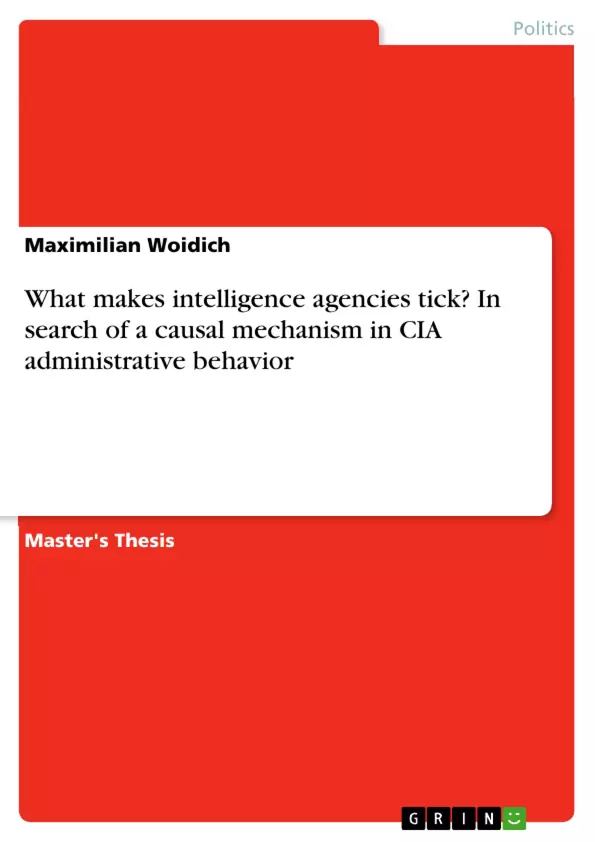This study applies theory-building causal process tracing to the institutionalization of the CIA's EIT programme. It thereby identifies a casual mechanism endemic to a public bureaucracy that functions as an intelligence agency. Secrecy practices and the nature of covert action create an imperfect information market, wherein informal influence is concentrated in small groups. The actions of these small groups might hamper organizational learning and lead to organizational dysfunctions. In the case of the CIA this is shown to be relevant because of the central role the agency’s Counterterrorism Center played in the causal chain leading up to the EIT institutionalization. Future studies should test this mechanism in the context of intelligence agencies other than the CIA.
Inhaltsverzeichnis (Table of Contents)
- Introduction: environments and decisions…...
- Literature overview: the relevant data sources and theoretical inputs ..............
- Method: how to use CPT for theory-building...
- Concept specification: What is an intelligence agency?
- Inspiration: building a first theoretical construct
- The macro-level perspective: a simple principal-agent-model.….…………………………..\n
- Going deeper: micro-level implications of secrecy\n
- Collecting evidence: explaining the torture case with CPT
- Comprehensive storyline: a macro-level tale of institutional torture.\n
- Causal chain: a micro-level retracing of the steps.........
- Phase 1: setting the stage in 2001\n
- Phase 2: the rationalization of torture in 2002\n
- Phase 3: the EITs' institutionalization in 2003\n
- Leveraging the inspiration: How do the preliminary hypotheses hold up?
- Refinement: building a causal mechanism
- Conclusion..
- Appendix: Event-driven table of EIT history..
- Bibliography.....
Zielsetzung und Themenschwerpunkte (Objectives and Key Themes)
This study aims to identify a causal mechanism that explains the administrative behavior of the CIA. The study focuses on the institutionalization of the CIA's Enhanced Interrogation Technique (EIT) program through the application of theory-building causal process tracing. Key themes of this study include: * **Secrecy practices and their influence on organizational learning.** * **The role of informal influence in intelligence agencies.** * **The impact of small groups on organizational decision-making.** * **The complex relationship between bureaucracy and covert action.** * **The institutionalization of torture in the context of the CIA's Counterterrorism Center.**Zusammenfassung der Kapitel (Chapter Summaries)
The study begins with an introduction to the decision-making environment within intelligence agencies. It then delves into a literature review, discussing relevant data sources and theoretical inputs. The methodology used for theory-building, causal process tracing (CPT), is thoroughly explained. Chapter four defines the concept of an intelligence agency. Chapter five explores the theoretical construct, starting with a macro-level principal-agent model and then examining the micro-level implications of secrecy. Chapter six analyzes the torture case through CPT, presenting a comprehensive storyline and retracing the causal chain of events. Chapter seven refines the theoretical construct by building a causal mechanism to explain the observed administrative behavior within intelligence agencies.Schlüsselwörter (Keywords)
This study focuses on key concepts including intelligence agencies, organizational behavior, bureaucracy, secrecy, covert action, informal influence, causal process tracing, institutionalization, torture, Enhanced Interrogation Technique (EIT), CIA, Counterterrorism Center, and organizational learning.- Citation du texte
- Maximilian Woidich (Auteur), 2016, What makes intelligence agencies tick? In search of a causal mechanism in CIA administrative behavior, Munich, GRIN Verlag, https://www.grin.com/document/346353



